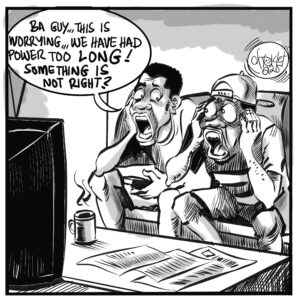Economic analyst Mambo Hamaundu says whilst the reduction in the Monetary Policy Rate has improved liquidity in banks, citizens are unable to get loans to expand their businesses due to uncertainty.
The Bank of Zambia reduced the monetary policy rate from 10.25 per cent to 9.75 per cent four weeks ago.
In an interview with News Diggers! Hamaundu said despite the reduction, citizens are not acquiring loans because the economy has not properly stabilized.
“What is true is that most of the commercial banks have adjusted their lending rates in conformity of the same magnitude as the reduction in the policy rate. It goes without saying that with the reduction of the Statutory Reserve Ratio, it is given that liquidity particularly in the bank has been enhanced. And now the ultimate objective is to try and see if more people can access loans and therefore invest in the expansion of their businesses and grow the economy. And I think that is where we should be going to. In terms of that, I don’t think that that has yet become a reality because normally when such an adjustment is made, it needs to sink in the mind of the people in business that the reduction is of a permanent nature and once that idea sinks in, then business people can begin to take a risk and try and borrow for the expansion of their businesses,” Hamaundu said.
“So, I guess it is just a question of time before such a move can begin to actualize in terms of expansion of businesses. It’s a question of how the business players are viewing the move. But liquidity particularly in the bank has improved, there is no doubt about that. And the lending rates have been adjusted downwards, the only thing that must happen is the aspect of people getting loans for business.”
And Hamaundu observed that the Kwacha had been relatively stable in the first quarter of 2018.
“The currency has been volatile but it suffices to say that when you are looking at the strengths the Kwacha might end the quarter a bit stronger than where it was when the quarter started. When you go around now you will find that the Kwacha is around 9.6 where as in the beginning it was very close to 10. So, one positive step that can be ticked, despite the volatility, you know the extent of movement upwards or downwards, is being reduced. A range is being established and if we continue at that rate, we might actually achieve the stability in the currency, because when you are looking at stability, it doesn’t necessarily mean that your rate will be the same. There could be marginal movements upwards or downwards, but it will more or less be in the same range. So, I think as we are coming towards the end of the quarter, I think the Kwacha is performing slightly better. It might end the quarter with a stronger Kwacha, but this can actually be attributed to subdued demand. Demand has not really been that high. Of course, when you are looking at the supply side, there could have been an improvement particularly in March with the action of treasury bills. I think it contributed to the improvement in supply,” said Hamaundu.
“Generally, the high copper prices have also contributed towards the improvement in supply. But like I have always stated, what will be important and what will be fundamental is if the strengthening of the currency is driven by production within the economy. So that would mean that our currency can hold a little bit longer when it strengthens because the strength will be based on the production base improving and if the production base improves in this country, it means that demand for forex might drop because ordinarily demand by forex is driven by the fact that we have to import goods and services which are not locally available but if the goods are locally available, locally available by way of production, then we could see a permanent reduction in terms of that aspect of demand. That’s why currency must be driven by production.”
























